The ECITB Workforce Census 2024 Report provides a comprehensive overview of the engineering construction industry (ECI) workforce in Great Britain, highlighting key trends, workforce demographics, and hiring challenges
The ECITB Workforce Census surveyed 74,609 workers, 78.8% of the total ECI workforce. Those surveyed were spread across 162 establishments representing 1,621 locations.
Below is a summarised breakdown:
1. Key Findings
Workforce size & growth:
- The ECI workforce grew from 83,600 in 2021 to 94,680 in 2024 (+13.2%) and is projected to grow another 11.7% by 2027.
- The nuclear sector surpassed oil & gas as the largest employer, accounting for 39.2% of the workforce in 2024.
- The renewables sector has nearly doubled in workforce share, reaching 6.2%.
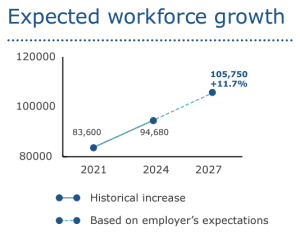
Geographic distribution:
- England accounts for 70.8% of the workforce, with major hotspots in the North West, Humber Estuary, and Reading-London axes.
- Scotland represents 17% of the workforce, focusing on the Central Belt and Aberdeen.
- Offshore workers account for 9.9% of the workforce.
Occupational shifts:
- Growth in management roles (+2.7%) and craft roles (+1.2%) reflects recovery from the pandemic and increased project activity.
- Technicians and engineers saw slight declines, reflecting industry shifts.
2. Demographics
Age profile:
- The workforce is aging, with 14.7% over 60 (up from 11.6% in 2021). Younger workers (under 30) increased slightly to 16.8%.
- Roles like platers, welders, and pipefitters have a higher proportion of older workers, raising concerns about skill transfer.
Gender:
- Women now represent 16.9% of the workforce, up from 13.8% in 2021, but disparities remain across roles and regions.
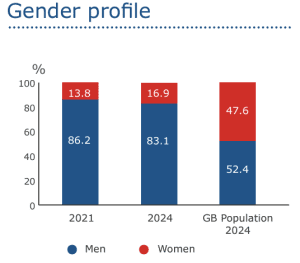
Ethnicity:
- Workforce diversity has improved but remains lower than the economically active UK population. Regional variations are stark (e.g., London is more diverse than other regions).
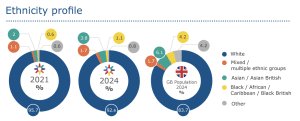
3. Hiring challenges
Recruitment issues:
- 71% of employers reported hiring difficulties in 2024 (up from 53% in 2021).
Key barriers include skill shortages, mismatched worker expectations, and geographic mobility issues.
Hard-to-fill roles:
- Positions like pipefitters, welders, commissioning engineers, and project managers are particularly difficult to recruit for.
4. Sector-specific insights
- The nuclear sector is a key growth area due to new projects and decommissioning.
- The oil & gas sector is transitioning toward decommissioning, with moderate workforce growth.
- Hydrogen and carbon capture sectors are emerging but constrained by delayed investments.
- Renewables growth is driven by offshore wind and biomass but depends heavily on local manufacturing.
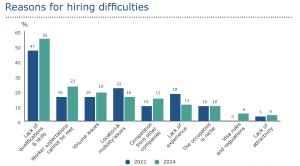
Recommendations
The report highlights several key strategies to address challenges and seize opportunities in the engineering construction industry (ECI):
1. Succession planning
- Tackling the Aging Workforce: With 14.7% of workers over 60, there is a pressing need for targeted efforts to:
-
- Transfer skills from older workers to younger employees.
- Invest in apprenticeship programs and mentoring initiatives to ensure critical roles (e.g., pipefitters, welders, and platers) are not left vacant as senior workers retire.
2. Strengthen training and development
- Upskilling for Growth Sectors: The shift toward renewable energy, hydrogen, and carbon capture demands a workforce equipped with specialised skills.
-
- Employers should prioritise training in sectors like offshore wind, biomass, and carbon capture.
- Leverage the ECITB’s Labour Forecasting Tool to anticipate regional skill gaps and prepare workforce pipelines.
- Digital Skills Training: The adoption of digital technologies in project planning and management requires upskilling in areas like automation and data analytics.
3. Diversity and inclusion initiatives
- Gender Representation: Women now make up 16.9% of the workforce, but more progress is needed to reduce gender disparities in traditionally male-dominated roles.
-
- Employers should design targeted recruitment campaigns and create supportive environments to attract and retain women in the industry.
- Ethnic Diversity: Ethnic diversity has improved but is inconsistent across regions. Efforts should focus on aligning workforce representation with local populations.
-
- Employers can conduct regional recruitment drives and community engagement to attract a more representative workforce.
4. Addressing recruitment challenges
- Develop strategies to overcome barriers such as:
-
- Skill shortages: Partner with vocational training providers to certify workers in high-demand roles like pipefitting, welding, and project management.
- Geographic mobility issues: Offer incentives such as relocation packages or remote work options where feasible.
- Worker expectations vs. employer offerings: Focus on improving job security, lifestyle benefits, and progression opportunities to attract younger workers.
5. Collaboration with government and industry
- Engage with government programs and funding initiatives to:
-
- Support projects in green energy and decommissioning.
- Align workforce training with national targets, such as achieving Net Zero emissions.
Outlook for 2024-2027
The industry anticipates significant changes in the coming years:
1. Workforce growth
- The workforce is expected to grow by 11.7% by 2027, with key contributions from:
-
- Expansion of the nuclear sector, driven by large-scale projects and modular reactors.
- Renewables, particularly offshore wind, biomass, and energy-from-waste projects.
- Emerging sectors like hydrogen and carbon capture, though growth depends on final investment decisions.
2. Evolving Sector Dynamics
-
Nuclear Sector:
-
- Expected to remain the largest employer, with growth fueled by new installations and decommissioning work.
-
Oil & Gas:
-
- A continued shift toward decommissioning North Sea assets is anticipated. Workforce needs may decline slightly post-2025 as projects wrap up.
-
Renewables:
-
- Rapid growth is expected to continue, particularly in offshore wind and hydrogen infrastructure.
- Local content decisions (e.g., domestic manufacturing vs. importing components) will heavily influence workforce demands.
3. Hiring challenges
- The industry must resolve systemic issues, including:
-
- Lack of workers with required qualifications and skills.
- Increasing competition for talent within the ECI and with other sectors like IT and defense.
4. Workforce composition
- The age profile indicates a significant risk of mass retirements in the next decade. Succession planning and increased efforts to attract younger workers are critical.
- Improving diversity will not only address recruitment challenges but also enhance workplace culture and innovation.
5. Regional hotspots
- Workforce growth will be concentrated in key regions like:
-
- North West England (nuclear and decommissioning).
- Scotland’s Central Belt (renewables and oil & gas).
- Humber Estuary and South East England (various projects).
Final strategic recommendations
- Leverage data tools: Utilise the ECITB Labour Forecasting Tool to predict trends, identify regional gaps, and design tailored workforce strategies.
- Invest in emerging sectors: Focus on building a pipeline of workers skilled in renewables, hydrogen, and other green energy sectors.
- Boost retention: Create career pathways with clear progression opportunities to retain younger workers and reduce attrition rates.
- Community engagement: Partner with schools, colleges, and local communities to raise awareness of ECI careers and attract new talent.
- Long-term planning: Collaborate across industry and government to align workforce supply with evolving project demands, particularly in the context of decarbonisation and infrastructure renewal.
‘Hiring challenges are predominantly for skilled workers’
ECITB chief executive, Andrew Hockey, said: “The Census is vital in helping industry understand labour market dynamics, anticipate workforce challenges and develop strategies to address skill gaps across Great Britain.
“The hiring challenges are predominantly for skilled workers where engineering construction companies are competing to recruit from the same pool of experienced workers.
“But we also need to increase the pool of people joining the industry – training new recruits, encouraging people to embark on a career in the ECI and increasing training provider capacity to grow new entrant numbers.
The ECITB is “fully committed” to investing in the ECI workforce
“That’s why almost half of the £87m committed to support industry in our three-year strategy (2023-2025) has been allocated to supporting new entrants, including through our apprenticeship and graduate grants, Scholarship and Work Ready programmes,” Hockey continued.
“Our Regional Skills Hub funding is designed to boost training provider capacity and grow new entrant numbers in the ‘Industrial Cluster’ hot spots and other major engineering construction centres of activity at the heart of the UK’s decarbonisation agenda.
“Only through bringing in new talent, training and upskilling existing workers can industry benefit from the skilled workforce it needs both for now and the future. The ECITB will continue to support employers to invest in their talent pipeline – from helping industry to grow the number of apprenticeships and graduate opportunities, developing alternative entry pathways as well as funding quality training to upskill and reskill the workforce.
“By investing in the workforce, new and existing, the industry has a fighting chance of closing the skills gap – and this mission is one that the ECITB remains fully committed to.”



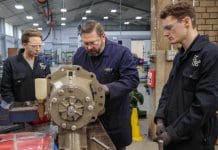








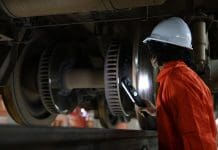
![[VIDEO] First HS2 twin-bore tunnel completes civil engineering phase The HS2 twin bore tunnel, Long Itchington Wood Tunnel](https://www.pbctoday.co.uk/news/wp-content/uploads/2025/02/HS2-Long-Itchington-tunnel-walk-25_cropped-218x150.jpg)
